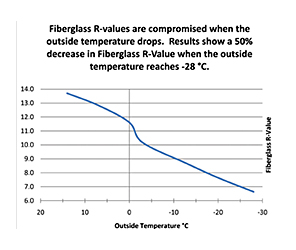[fusion_builder_container background_color=”” background_image=”” background_parallax=”none” enable_mobile=”no” parallax_speed=”0.3″ background_repeat=”no-repeat” background_position=”left top” video_url=”” video_aspect_ratio=”16:9″ video_webm=”” video_mp4=”” video_ogv=”” video_preview_image=”” overlay_color=”” video_mute=”yes” video_loop=”yes” fade=”no” border_size=”0px” border_color=”” border_style=”solid” padding_top=”130px” padding_bottom=”110px” padding_left=”” padding_right=”” hundred_percent=”no” equal_height_columns=”yes” hide_on_mobile=”no” menu_anchor=”” class=”” id=””][fusion_builder_row][fusion_builder_column type=”1_1″ layout=”1_1″ background_position=”left top” background_color=”” border_size=”” border_color=”” border_style=”solid” spacing=”yes” background_image=”” background_repeat=”no-repeat” padding_top=”” padding_right=”” padding_bottom=”” padding_left=”” margin_top=”0px” margin_bottom=”0px” class=”” id=”” animation_type=”” animation_speed=”0.3″ animation_direction=”left” hide_on_mobile=”no” center_content=”no” min_height=”none” last=”no” hover_type=”none” link=”” border_position=”all”][fusion_text]
How Traditional Insulation works:
[/fusion_text][fusion_separator style_type=”single solid” top_margin=”0″ bottom_margin=”35″ sep_color=”#e2e3e8″ border_size=”3px” icon=”” icon_circle=”” icon_circle_color=”” width=”170px” alignment=”left” class=”” id=”” /][fusion_text]
The colder it gets outside the less effective Fiber Insulations such as Fiberglass, Cellulose and Rockwool are at keeping you warm inside. Polystyrene foam has a “real world” R-Value which is not affected by external forces like temperature.
Similar studies found the same effect with another external force: wind. Wind causes pressure differences across the exterior walls. Air Leakage compounds this effect as hot air leaks out the top of the building and cold air is sucked in at the bottom of the building. As a result of this pressure difference the polyethylene plastic vapor barrier is sucked into the wall cavity compressing Fiber Insulations such as Fiberglass, Cellulose and Rockwool. Depending on the strength of the wind R-Values can be cut by 40-80%.[/fusion_text][/fusion_builder_column][fusion_builder_column type=”1_2″ layout=”1_3″ last=”no” spacing=”yes” center_content=”no” hide_on_mobile=”no” background_color=”#f8f8f8″ background_image=”” background_repeat=”no-repeat” background_position=”left top” hover_type=”none” link=”” border_position=”all” border_size=”0px” border_color=”” border_style=”solid” padding_top=”” padding_right=”” padding_bottom=”” padding_left=”” margin_top=”” margin_bottom=”40px” animation_type=”0″ animation_direction=”down” animation_speed=”0.1″ animation_offset=”” class=”” id=”” min_height=””][fusion_imageframe lightbox=”yes” gallery_id=”” lightbox_image=”” style_type=”none” hover_type=”zoomin” bordercolor=”” bordersize=”0px” borderradius=”” stylecolor=”” align=”center” link=”” linktarget=”_self” animation_type=”0″ animation_direction=”down” animation_speed=”0.1″ animation_offset=”” hide_on_mobile=”no” class=”” id=””]  [/fusion_imageframe][fusion_text]
[/fusion_imageframe][fusion_text]
[/fusion_text][/fusion_builder_column][fusion_builder_column type=”1_2″ layout=”1_3″ last=”yes” spacing=”yes” center_content=”no” hide_on_mobile=”no” background_color=”#f8f8f8″ background_image=”” background_repeat=”no-repeat” background_position=”left top” hover_type=”none” link=”” border_position=”all” border_size=”0px” border_color=”” border_style=”solid” padding_top=”” padding_right=”” padding_bottom=”” padding_left=”” margin_top=”” margin_bottom=”” animation_type=”0″ animation_direction=”down” animation_speed=”0.1″ animation_offset=”” class=”” id=”” min_height=””][fusion_imageframe lightbox=”yes” gallery_id=”” lightbox_image=”” style_type=”none” hover_type=”zoomin” bordercolor=”” bordersize=”0px” borderradius=”” stylecolor=”” align=”center” link=”” linktarget=”_self” animation_type=”0″ animation_direction=”down” animation_speed=”0.1″ animation_offset=”” hide_on_mobile=”no” class=”” id=””]  [/fusion_imageframe][fusion_text]
[/fusion_imageframe][fusion_text]
[/fusion_text][/fusion_builder_column][fusion_builder_column type=”1_1″ layout=”1_1″ spacing=”” center_content=”no” link=”” target=”_self” min_height=”” hide_on_mobile=”small-visibility,medium-visibility,large-visibility” class=”” id=”” background_color=”” background_image=”” background_position=”left top” background_repeat=”no-repeat” hover_type=”none” border_size=”0″ border_color=”” border_style=”solid” border_position=”all” padding_top=”” padding_right=”” padding_bottom=”” padding_left=”” dimension_margin=”” animation_type=”” animation_direction=”left” animation_speed=”0.3″ animation_offset=”” last=”no”][fusion_text]
When installing ordinary batt or loose fill insulation in a wall assembly between wood studs they act as a thermal bridge which freely conducts the heat out of the home leaving about 20% of the exterior walls without insulation whatsoever.
[/fusion_text][fusion_text]
Is there a better way? We think there is!
Thermal Lock Wall
[/fusion_text][/fusion_builder_column][/fusion_builder_row][/fusion_builder_container]
